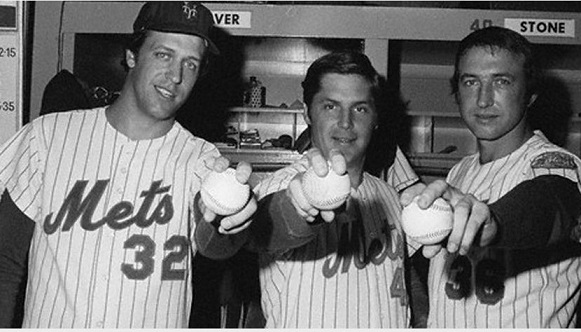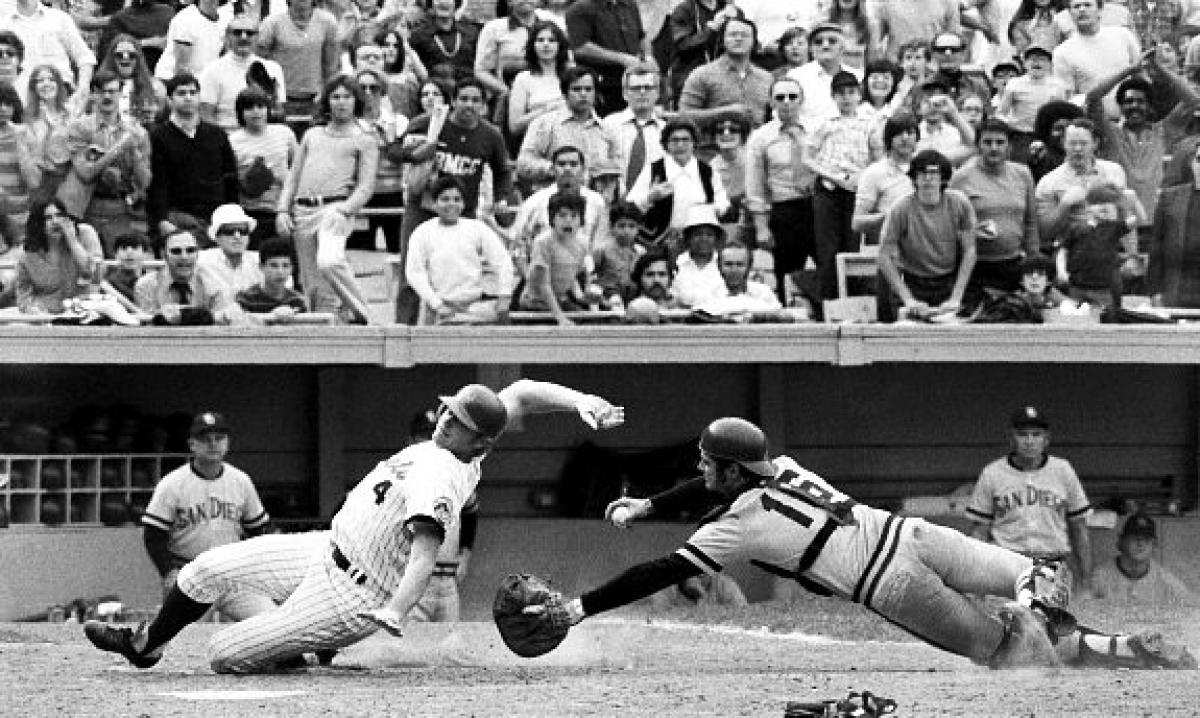
With all the talk about possibly packaging young players in a trade to fill the Mets’ obvious needs for 2015, I was reminded of the 1971/72 offseason. In 1970 and 1971, the Mets had identical 83-79 records as the Pirates won the division both years. Still, there was reason to be optimistic that the Mets could rise to the top again in 1972.
By 1971, the Mets brought several players to the big leagues who showed promise including John Milner, Ken Singleton, Mike Jorgensen, Tim Foli, Teddy Martinez, Leroy Stanton, and pitchers like Jon Matlack and Buzz Capra. The team already had plenty of pitching talent, led by Tom Seaver, Gary Gentry, Jerry Koosman (who had an off-year) and the veteran Ray Sadecki. And Nolan Ryan, always erratic, still showed promise of being as good as any of them. What the team lacked was power. Kranepool, Jones, and Agee tied for the team lead with 14 home runs each. Plus there was an obvious need for a third baseman as recent years showed that Joe Foy, Wayne Garrett, and Bob Aspromonte were not the answer.
The off-season started with the October 18th trade of Jim Bibby, Art Shamsky, Rich Folkers, and Charles Hudson to the St. Louis Cardinals for Harry Parker, Jim Beauchamp, Chip Coulter, and Chuck Taylor. This was a relatively inconsequential trade, although eventually Bibby did become a very good major league pitcher.
This was a time before free agency. GM Bob Scheffing had work to do, and it would require more trades, but he seemed to have the excess talent to bring the Mets back to the top with a few good moves. Ever since the 1971 season ended, talk among Mets’ fans and writers seemed to center on the team’s possible acquisition of third baseman Ron Santo from the Cubs. Adding Santo would fill the hole at third base while providing the Mets with the power bat they’d been seeking as well as a positive clubhouse influence and a team leader. The problem was that any package the Mets might offer the Cubs would leave Chicago with a hole at third base and didn’t seem to make much sense for a team that had just finished the season with the same 83-79 record as the Mets. As is still the case today, fans conjured up trades that would help the Mets and seemed fair in terms of what they may have to give up without regard to the needs of the team on the other end. (Did you think this was a new phenomenon?)
White Sox power-hitting third baseman Bill Melton was also mentioned as a possible target for the Mets. I have no idea how close they came to actually making any deal, but by the end of the Winter Meetings, the Mets still hadn’t made their anticipated big move. Then on December 10th, the Mets announced that they had traded Nolan Ryan along with Stanton, minor league catcher Francisco Estrada, and pitcher Don Rose to the California Angels for perennial American League All-Star shortstop Jim Fregosi with the intention of moving him to third base. This has come to be considered as one of the all-time worst trades in baseball history, but if I remember correctly, at the time many Mets’ fans were glad that the Mets didn’t give up Gentry rather than Ryan and were more disappointed by having to throw in Stanton.
Ryan, of course, had that blazing fastball and “unlimited potential” but in 1971 beginning with his appearance the day before the All-Star break, he was 2-9 with a 7.62 ERA , averaging under 4.0 innings per start and more than 10 hits and 10 walks with only 6.75 strikeouts per 9 innings. There was even a chance he wouldn’t make the team the following year.
Fregosi was coming off an injury-plagued .233 season, but the previous year, he had hit .278 with 22 home runs and 82 RBI – and the Mets expected that the transition to third base would be easy for him. (This was one of many deals and signings that the Mets made for players who were former all-stars that never worked out!)
Fregosi suffered a broken thumb in an infield drill getting accustomed to playing third base in spring training while all the young position players competed for the few open jobs in the lineup or on the bench. Then, on April 2nd just before the start of the season, Mets’ manager Gil Hodges died suddenly of a heart attack and Yogi Berra was named as his replacement.

At the same time, the Mets stunned their fans by acquiring Rusty Staub from the Montreal Expos for three of the young players who were fighting for jobs on the Mets – Singleton, Foli, and Jorgensen. Although all three had the potential to be good major league players, Foli was blocked by Bud Harrelson, the “glue” of the Mets’ infield, Jorgensen was one of three lefty first basemen along with John Milner and Ed Kranepool and Singleton’s job in right field now figured to be filled for many years to come by Staub, one of the great professional hitters in the game. Before the deal, I don’t remember reading or hearing anything about a potential Staub deal for the Mets, but back in those days, resources were scarce compared to today’s social media.
The Mets entered the 1972 season as favorites to win the division and got off to an impressive 25-7 start. In May, the Mets acquired Willie Mays who although well past his prime added even more excitement and professionalism to the club. It seemed like 1972 would be the year the Mets would return to glory. There was a great mix of experienced veterans, players just entering their prime, and promising rookies (Matlack and Milner). Then, the injury bug struck – BIG. Suffice it to say that key players like Staub, Grote, Harrelson, and Cleon Jones missed a lot of time and the Mets won just 83 games (again), finishing third.
How does this all relate to the present day? Once again the Mets seem to have an excess of young players. The question is how to parlay that talent into a winning major league team ASAP. The 1971/72 Mets made one terrible deal and one that might have paid off immediately had Staub not been injured. Unfortunately, when you trade seven players for two, and then one gets hurt while the other fails to perform, it comes back to bite you. Especially if you don’t have the depth to replace them.
Letting Bibby go because they had plenty of other pitching prospects was also a mistake. Look at the list of players the Mets traded in that one off-season and you can see how short-term goals come at a great cost. The Mets did have that “fluke” pennant in 1973, but many dark days followed.
The present-day Mets could go for free agents like Michael Cuddyer, JJ Hardy, or Torii Hunter or offer a package of players for an established star. Names like Troy Tulowitzki, Carlos Gonzalez, Starlin Castro, and Yoenis Cespedes have been mentioned and while if they stay healthy, they would certainly bolster the Mets’ chances next year, would you give up 3 or more young players to acquire one of them? As much as I want to see the Mets win next year, the off-season of 1971/72 is a cautionary history lesson.















